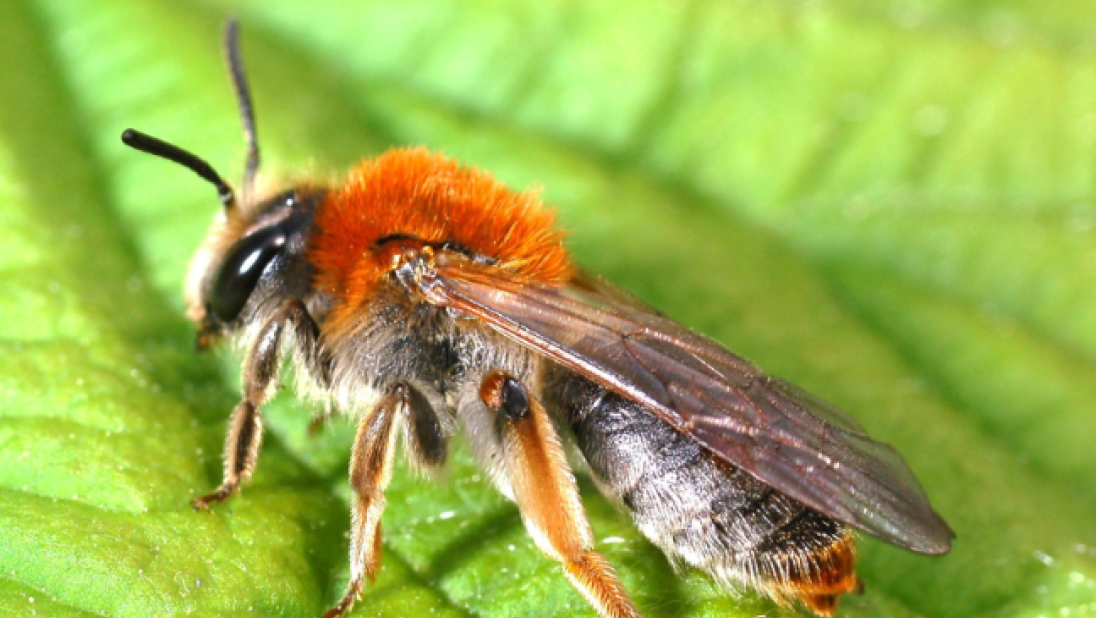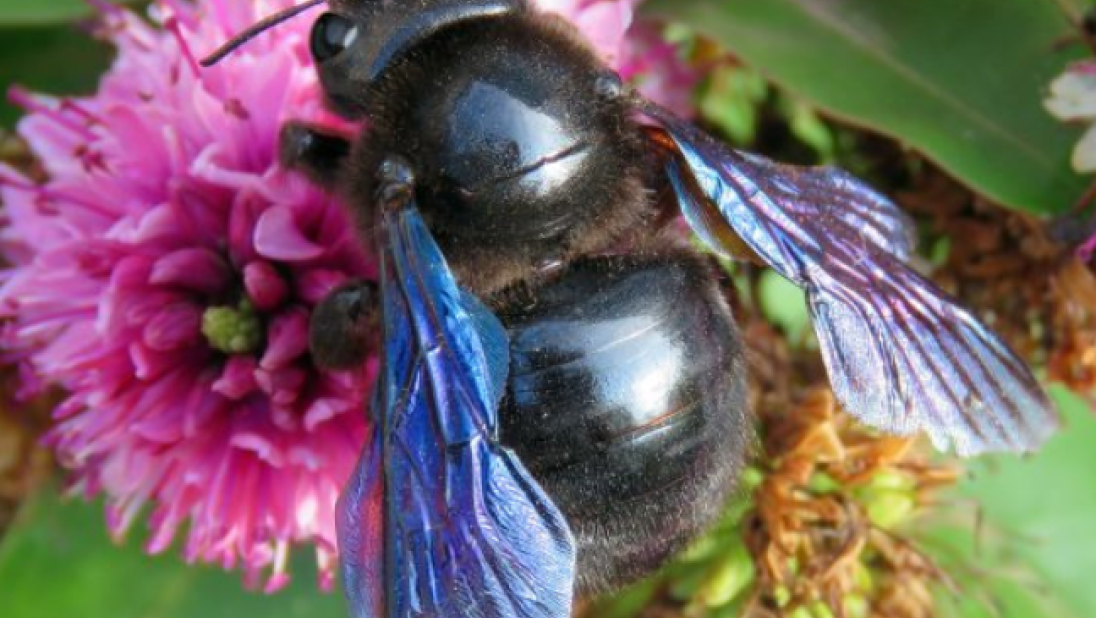Download resources developed by the All Ireland Pollination Plan for more information.
The Solitary Bee
To celebrate World Bee day this year, we're taking this opportunity to focus on the incredible array of solitary bees we have in Ireland and the important work they do for our planet. We are lucky to have a number of solitary bee species call the Ulster Folk Museum home.
Bee species in Ireland
There are 102 bee species in Ireland, they fall into three main categories:
- Honeybee (1 species)
- Bumblebees (21 species)
- Solitary Bees (80 species)
Of our 80 Solitary Bee species – 15 species nest in existing cavities while the rest are referred to as ‘mining bees’ because they carve out and create their own nests.
The Honeybee species that are kept by beekeepers are thankfully not in decline. However, one-third of our wild bee species (Bumblebees and Solitary Bees) are threatened with extinction from the island of Ireland.
Solitary Bee Species
How to identify a solitary bee
Solitary bees can be tricky to identify. Species identification usually involves taking a specimen and using an instrument called a stereo-microscope along with a specialist key. However, there are fifteen species that can be identified in the field by sight. The All-Ireland Pollinator Plan provides you with everything to need to start identifying these species.
If you find a solitary bee you can submit your Northern Ireland records to CEDaR Online Recording and your Republic of Ireland Records to the National Biodiversity Data Centre.
Why pollinators are important
Pollinators are really important for the survival of our ecosystems and therefore, our world’s biosphere, particularly bees - most of the insect pollination of crops and wild plants is carried out by bees. The remainder is carried out by the other insects that visit flowers particularly, hoverflies and moths. Bees are particularly important for pollination because they feed their young solely on pollen, so their entire lifecycle is based on visiting plants and collecting as much pollen as they can.
78% of our wild plants benefit from insect pollination.
Wild plants sustain all other biodiversity (including us humans!), they also provide flood mitigation and carbon sequestration services as well as being incredibly good for our mental and physical health when we connect with nature.
If we didn’t have pollinators, it would be very hard to have a healthy and balanced diet as it’s mainly fruits and vegetables that are pollinated, making them vital to human health and wellbeing.
Economically speaking, the free service provided by bees is worth over £51 million per year in Ireland.
Food for Pollinators
Habitat loss, decline in native flowers, pests and diseases, pesticides and climate change are all responsible the decline of our wild pollinators in Ireland. However, in Ireland hunger is the biggest threat to our wild pollinators – there are not enough native flowers in our landscape throughout the different seasons to support our wild pollinators.
Native wild flowers that provide vital food sources across the different seasons for our pollinators are shown below, you can find more information on all the wild flowers that feed our pollinators here.
Like all creatures, solitary bees need food, shelter and protection to survive, thrive and grow to develop next year’s pollinators.
Most of our solitary bees are mining bees, they nest in bare ground (soil, clay, sand and peat), usually on south or east-facing banks of bare soil. It’s really easy to create this nesting habitat for them – all you need is a spade to scrape back some vegetation and create bare soil.
Did you know?
One of our solitary bees, the Gold-fringed Mason Bee, only nests in snail shells on coastal sites.
It has been found that one female Red Mason Bee does the pollination work of 100 honey bees.





















